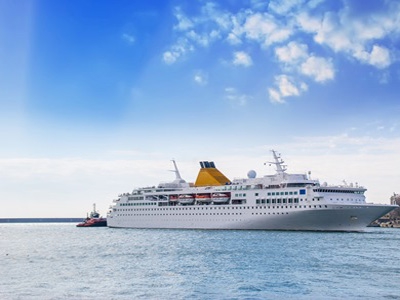Economic contribution hits new record but hurdles to growth need to be tackled, says CLIA Chairman
Europe’s Cruise indusry has delivered a record boost to Europe’s economic recovery, a report released by CLIA Europe has confirmed.
According to CLIA Europe’s 2015 Economic Contribution Report, the cruise industry’s economic output in Europe reached a new record of 40.2 billion in 2014, up 2.2% since the previous year, and including 16.6 billion in terms of direct expenditues by the industry.
The number of European jobs the industry accounted for in 2014 reached 348,000, 10,000 more than in the previous year, amounting to 10.75 in terms of employee compensation.
Europe remains a key player in the global cruise industry map, being the second biggest source market worldwide, the second most popular destination, and the undisputable global leader in cruise ship building.
Thus the cruise industry continues to make a valuable contribution to Europe’s economy at a crucial time of economic recovery.
And yet, a number of challenges are keeping Europe’s cruise industry from realising its full potential. These notably include a cumbersome Visa application process for the Schengen Area that is keeping millions of would-be tourists from visiting Europe, and a lack of investment in coastal infrastructure and port facilities throughout the Continent.
Pierfrancesco Vago, CLIA Europe’s Chairman, said:
“The cruise industry is making a vital contribution to Europe’s economic recovery. In 2014 the cruise industry injected nearly 40 billion into the European economy and sustained almost 350,000 European jobs, over 80,000 of which were in the manufacturing sector. These record results are something we’ve all worked hard for and we should celebrate and build on.” But on a cautionary note he added, “While future growth can be achieved in Europe, it is far from guaranteed.”
He continued: “Although a record 6.4 million European residents booked cruises in 2014 last year and European shipyards with record order books for new cruise ships remain the centre of the world’s cruise shipbuilding, there are some worrying trends. For example the numbers embarking on cruises from European ports is down by 3.6% to 5.85 million.”
He concluded, “This downward trend in Europe as a destination is a result of the serious hurdles to growth, which if ignored risk leaving that potential forever locked up and risk stalling the year on year economic growth we have all worked hard to deliver. Europe needs to tackle them by implementing environmental legislation in a harmonised way, streamlining visa procedures, investing in coastal infrastructure, and improving port facilities.”
|
According to CLIA Europe’s 2015 Economic Contribution Report 6.4 million European residents booked a cruise holiday in 2014, representing a 0.5% increase over 2013 and accounting for 30% of all cruise passengers worldwide. Europe is also a major destination for cruise passengers and ships from around the world, attracting substantial tourism investment and spending. 5.85 million passengers embarked on their cruises from European ports in 2014, a 3.6% decline from 2013. Around one million passengers came from outside the Europe. Europe remains the centre of the world’s cruise shipbuilding. Spending on new builds and maintenance has risen for a third year, following a three-year decline ending in 2012. 29 new ships are on the order books of European shipyards until 2018, with a total value of almost 16 billion. European shipyards, which build most of the world’s state-of-the-art cruise liners, enjoyed a 12.8% increase in their revenue from new construction and maintenance from 2013. In 2014, cruise lines spent 4.55 billion on new builds and refurbishments in Europe, the third annual increase. |
|
Key 2014 figures released by CLIA Europe:
|
How the cruise industry generates economic benefits across Europe
Click below to dowload CLIA’s 2015 Edition on the Contribution of Cruise Tourism to the Economies of Europe

































































